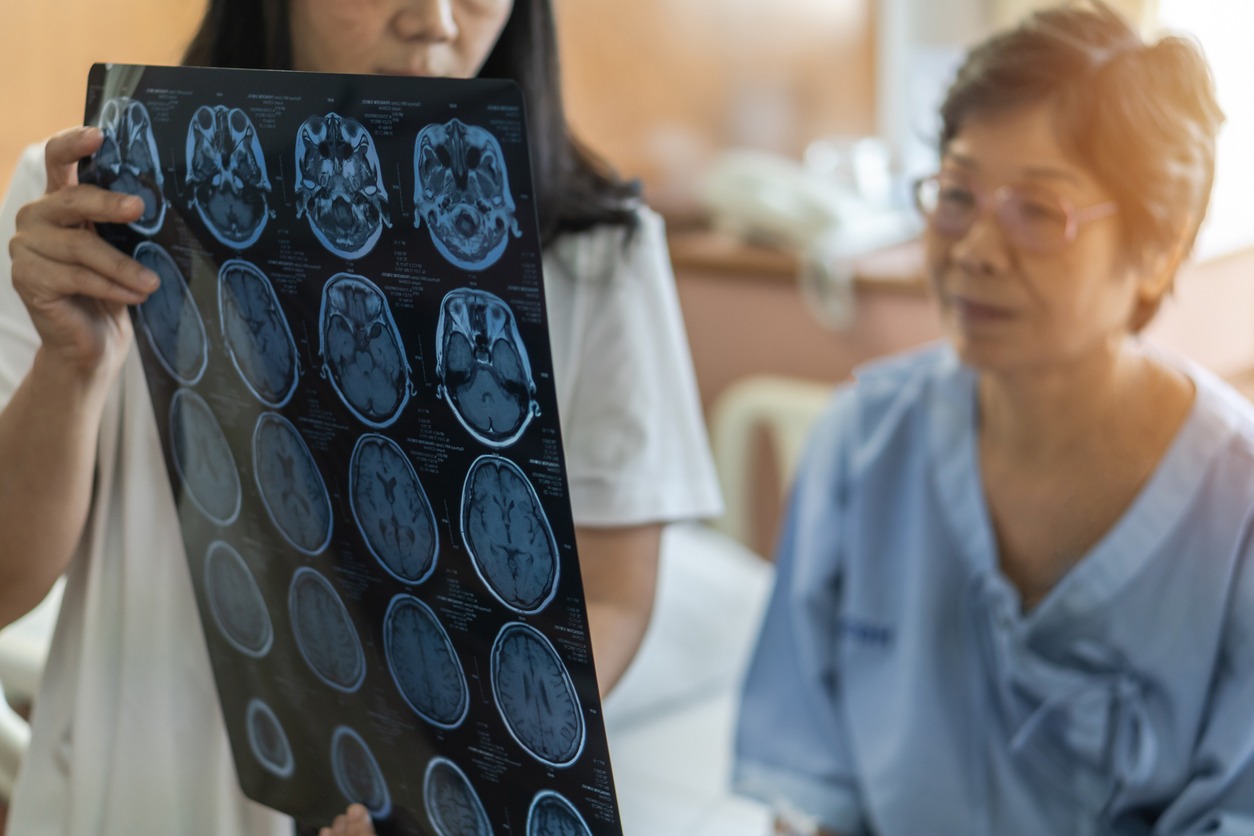Disclaimer: This article is for informational and educational purposes only and does not substitute professional medical advice. It is important to always consult a medical professional for any health issues.
Dementia is one of the most common conditions experienced by a lot of elderly individuals. But sometimes, people find it challenging to distinguish this condition from delirium. Both of them are disorders that can affect cognition and behavior, but they are different from one another. Each of them has distinct characteristics and requires different approaches to diagnosis and management.
Generally, delirium is a temporary and acute condition characterized by a sudden onset of confusion and cognitive disturbances. It is commonly caused by underlying medical conditions or environmental factors. This condition is usually reversible once the cause is addressed. Dementia, on the other hand, is a chronic and progressive syndrome that impairs cognitive function, memory, and daily functioning. Most of the time, it is caused by degenerative brain disorders, such as vascular dementia or Alzheimer’s disease, which tend to worsen over time.
If you are looking for more information about the differences between these two conditions, we are here to help you. In this article, we are going to discuss the definitions, causes, symptoms, and treatments for both delirium and dementia. We will also highlight the key differences between them to help you further understand the appropriate care and support needed by people who suffer from these disorders.
Understanding Delirium
Delirium is an acute and fluctuating state of confusion and cognitive impairment. It is usually characterized by disturbances in attention, awareness, and perception. [1] This condition can occur as a result of underlying medical conditions, side effects, substance abuse, or changes in the environment. Below is more information about this cognitive disorder:
What is Delirium?
Delirium is a neuropsychiatric syndrome characterized by acute and reversible disturbances in cognition, attention, and awareness. It is often accompanied by changes in behavior, perception, and consciousness. Simply put, delirium is a sudden change in a person’s mental state, and it changes over short periods of time. It is considered a medical emergency and finding the cause is needed for it to be treated. [2]
Causes of Delirium
There are various things that may cause delirium. These may include underlying medical conditions, such as infections, metabolic abnormalities, or organ failure. It may also be caused by certain medications, such as sedatives, opioids, and anticholinergics. People who have substance abuse or withdrawal may also suffer from delirium, as well as those who are sleep deprived. Some environmental factors may also cause it, such as hospitalization and being in unfamiliar surroundings.
What Happens to a Person Experiencing Delirium?
Below are some of the things that individuals who suffer from delirium might experience:
- Fluctuating levels of consciousness and awareness
- Impaired attention and focus
- Disorganized thinking and speech
- Memory deficits
- Perceptual disturbances like hallucinations and illusions
- Psychomotor disturbances like agitation and hypoactivity
- Disturbances in the sleep-wake cycle
Most of the time, delirium has an acute onset and fluctuating course. It tends to resolve once the underlying cause is treated or managed. But delirium can persist if the underlying condition persists or if there are multiple contributing factors.
Risk Factors for Developing Delirium
There are different risk factors for a person to develop delirium. These may include advanced age, having pre-existing cognitive impairment or dementia, multiple comorbidities, immobility and functional dependence, polypharmacy or use of multiple medications, and hospitalization or stay in an intensive care unit.
How is Delirium Diagnosed?
In order to diagnose delirium, comprehensive medical and cognitive evaluation is needed. Doctors will also assess an individual’s clinical history and symptoms, along with physical examination and laboratory tests in order to identify underlying causes. To aid in the diagnosis, using validated tools like the Confusion Assessment Method or the Delirium Rating Scale may be needed.
Understanding Dementia
After learning about delirium, let us now discuss dementia. This way, we will further see their differences. Below are some interesting information about dementia that you need to learn about:
What is Dementia?
As mentioned earlier, dementia is a chronic and progressive syndrome that is characterized by the gradual and irreversible decline of cognitive function. [1] It can impair the memory, reasoning, thinking, and daily functioning of an individual significantly. There are also various types of dementia, and Alzheimer’s disease is among the most common ones.
Generally, dementia is a group of neurodegenerative disorders characterized by persistent and progressive cognitive decline. It involves different cognitive domains, including language, memory, executive function, and visuospatial skills. Dementia is also progressive. This means that the condition worsens over time. The rate of progression depends on the underlying cause and other factors. [2]
If you want to learn more about dementia, you may check out these Top Dementia Guidebooks.
Different Types of Dementia
Below are the different types of dementia that older adults may suffer from:
- Alzheimer’s Disease: As mentioned earlier, this is the most common form of dementia. This condition is characterized by the accumulation of beta-amyloid plaques and tau protein tangles in the brain.
- Vascular Dementia: Another common type of dementia is vascular dementia. It is caused by impaired blood flow to the brain, which is commonly caused by stroke or small vessel disease.
- Lewy Body Dementia: This type of dementia is characterized by the presence of abnormal protein deposits referred to as Lewy bodies in the brain.
- Frontotemporal Dementia: This type of dementia involves degeneration of the frontal and temporal lobes of the brain, which lead to changes in behavior, personality, and language.
- Mixed Dementia: There are also people who suffer from mixed dementia, or the presence of multiple types of dementia. This is usually a combination of Alzheimer’s disease and vascular dementia.
Signs and Symptoms of Dementia
When an individual suffers from dementia, below are some of the common symptoms and behavioral changes that they may experience:
- Memory loss and forgetfulness
- Difficulty with language and communication
- Impaired judgment and decision-making
- Confusion and disorientation
- Changes in mood and personality
- Challenges with daily activities and self-care
How is Dementia Diagnosed?
Dementia can be diagnosed through different steps. It can be done through medical and cognitive assessment, including history taking and physical examination. There are also cognitive tests and neuropsychological evaluations that can be taken to assess the cognitive function of an individual. Some doctors will also request brain imaging like MRI or PET scan to identify structural and functional changes in the brain. Dementia is a complex condition that requires a multidisciplinary approach to diagnosis and management.
The Key Differences Between Delirium and Dementia
After learning about what delirium and dementia are, we will now take a look at the differences between these conditions. Understanding their key differences is important for accurate diagnosis and appropriate management and treatment. Take a look at the following main points of differentiation of the two cognitive conditions:
Onset and Duration
The onset of delirium is sudden and acute, mostly within hours to days. An individual may also experience fluctuating courses of delirium throughout the day. But its duration is generally shorter, which may last from days to weeks. [3]
Dementia, on the other hand, onsets gradually and insidiously, usually over months or years. It is slowly progressive and causes continuous decline. Compared to delirium, dementia is a long-lasting condition, and it can progress over years or even decades. [3]
Cognitive Impairments and Attention
In delirium, impairments in attention, concentration, and focus are common. An individual usually suffers from disorganized thinking and confusion, and memory deficits are variable and may fluctuate.
On the other hand, in dementia, multiple cognitive domains are affected, which include memory, language, executive function, and visuospatial skills. There may be attention deficits, but they are not the main feature. Memory loss is common in dementia and it is a progressive symptom.
Consciousness and Level of Alertness
When a person is experiencing delirium, he has an alert level of consciousness, ranging from hypoactive or reduced alertness to hyperactive or agitated, or restless. There are also fluctuations in consciousness throughout the day. A person who has dementia, on the other hand, has a preserved level of consciousness and alertness unless there are coexisting medical conditions or complications. [3]
Reversibility and Prognosis
Delirium is a reversible or treatable condition once the underlying cause is determined and addressed. Through appropriate management, delirium can be treated and cognition can return to baseline. Dementia, on the other hand, is irreversible and a progressive condition. The treatments for dementia only focus on managing its symptoms and slowing down its progression to optimize quality of life. [3]
Risk Factors and Underlying Causes
Delirium is often caused by medical conditions, medications, substance use, or changes in the environment. Its risk factors include advanced age, comorbidities, cognitive impairment, and hospitalization. Dementia, on the other hand, is mainly caused by degenerative brain disorders like Alzheimer’s disease, vascular dementia, or other less common types. Its risk factors include advanced age, family history, genetic factors, and certain lifestyle factors.
Overlapping Characteristics and Challenges in Diagnosis
There are overlapping characteristics that can be presented by delirium and dementia, which may lead to diagnostic challenges and potential misdiagnosis. As we’ve mentioned at the beginning of this article, some people find it hard to distinguish one condition from the other. It’s because delirium and dementia have similar symptoms. Below are some of them:
- Both delirium and dementia can exhibit cognitive impairment, such as memory deficits and attention disturbances.
- Confusion, disorientation, and changes in behavior can be present in both delirium and dementia.
- Sleep disturbances and psychomotor changes can also occur in delirium and advanced stages of dementia.
Diagnostic Challenges and Possible Misdiagnosis
Since delirium and dementia have certain similarities, some diagnostic challenges can be present which may lead to possible misdiagnosis. Below are some of them:
- Delirium superimposed on dementia: Individuals who have dementia may experience delirium. This may lead to difficulties in recognizing delirium as a separate condition.
- Underlying causes: Finding the main cause of cognitive impairment can be difficult because people with dementia can also develop delirium due to intercurrent medical conditions or changes in medications.
- Atypical presentations: Delirium and dementia can also manifest in atypical or different ways, which can make diagnosis more complex. This is true, especially in cases with subtle or overlapping symptoms.
These are why comprehensive assessment and differential diagnosis are important. Accurate diagnosis relies on a comprehensive evaluation, considering the clinical history, symptomatology, and appropriate diagnostic criteria. By addressing these challenges and implementing a systematic approach, healthcare professionals can differentiate between delirium and dementia, leading to appropriate management strategies.
Treatment and Management for Delirium and Dementia
Due to their different underlying causes and clinical characteristics, delirium and dementia are treated and managed in different ways. Optimizing patient outcomes depends on knowing the right treatments for each illness.
How to Treat and Manage Delirium
In order to treat delirium, it is very important to identify and manage its underlying causes. Treating medical conditions, adjusting medications, and addressing contributing factors like metabolic abnormalities, substance withdrawal, and infections may help. Aside from that, it is also important to create a calm and familiar environment for individuals suffering from delirium.
Providing supportive care, such as reassurance, clear communication, and engaging in therapeutic activities are also important to maintain a person’s orientation and cognitive stimulation. Also, in some cases, medications are used short-term to manage specific symptoms like anxiety, agitation, or hallucinations.
How to Treat and Manage Dementia
When it comes to treating and managing dementia, doctors may prescribe certain medications that target specific symptoms. These may include antidepressants or antipsychotics. Aside from that, patients may also be required to undergo cognitive stimulation activities, such as therapies and structured routines to enhance their cognitive functioning and quality of life. Psychosocial support and education for people with dementia and their caregivers are also beneficial.
It is also essential to keep the environment of people with dementia safe. They should also be in an environment that will help minimize their confusion and optimize their functional abilities. To enhance their overall well-being, physical exercise and living a healthy lifestyle are also important. Caregivers taking care of patients with dementia also need support, education, and resources for them to manage the challenges that come with dementia caregiving.
Conclusion
Delirium and dementia are indeed two different cognitive disorders, but they also have certain similarities. That is why understanding their differences is important for healthcare professionals, caregivers, and individuals affected by these conditions.
Understanding the difference between delirium and dementia can help in identifying if your loved one needs to see the doctor as soon as possible or if he should be evaluated at an appointment that is scheduled within a few days or weeks. By learning the distinctions between the two conditions and implementing the right interventions, both healthcare professionals and caregivers can give optimal care, support, and improved quality of life for people suffering from these disorders. We hope this post helped you learn more about the differences between delirium and dementia.
If your loved one is suffering from either of these, they may benefit from the use of weighted lap pads. You may learn more about them by reading our post What are Weighted Lap Pads and Their Benefits?
References
[1] Saint Luke’s Health System. (2023). The difference between delirium and dementia. Saint Luke’s Health System. Retrieved May 26, 2023, from https://www.saintlukeskc.org/health-library/difference-between-delirium-and-dementia
[2] Crisis Prevention Institute, C. (2015, June 19). What’s the difference between dementia and delirium?: Crisis Prevention Institute (CPI). Crisis Prevention Institute. Retrieved May 26, 2023, from https://www.crisisprevention.com/Blog/Difference-Between-Dementia-and-Delirium
[3] Heerema, E. (2021, September 15). What are the differences between delirium and dementia?. Verywell Health. Retrieved May 26, 2023, from https://www.verywellhealth.com/whats-the-difference-between-delirium-and-dementia-98838






